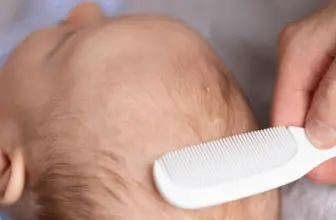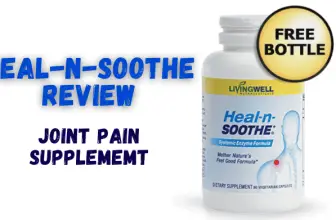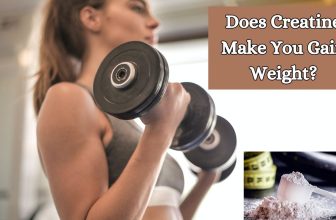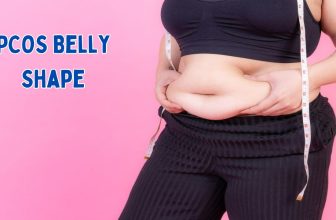When Can I Eat Solid Food After Tooth Extraction?
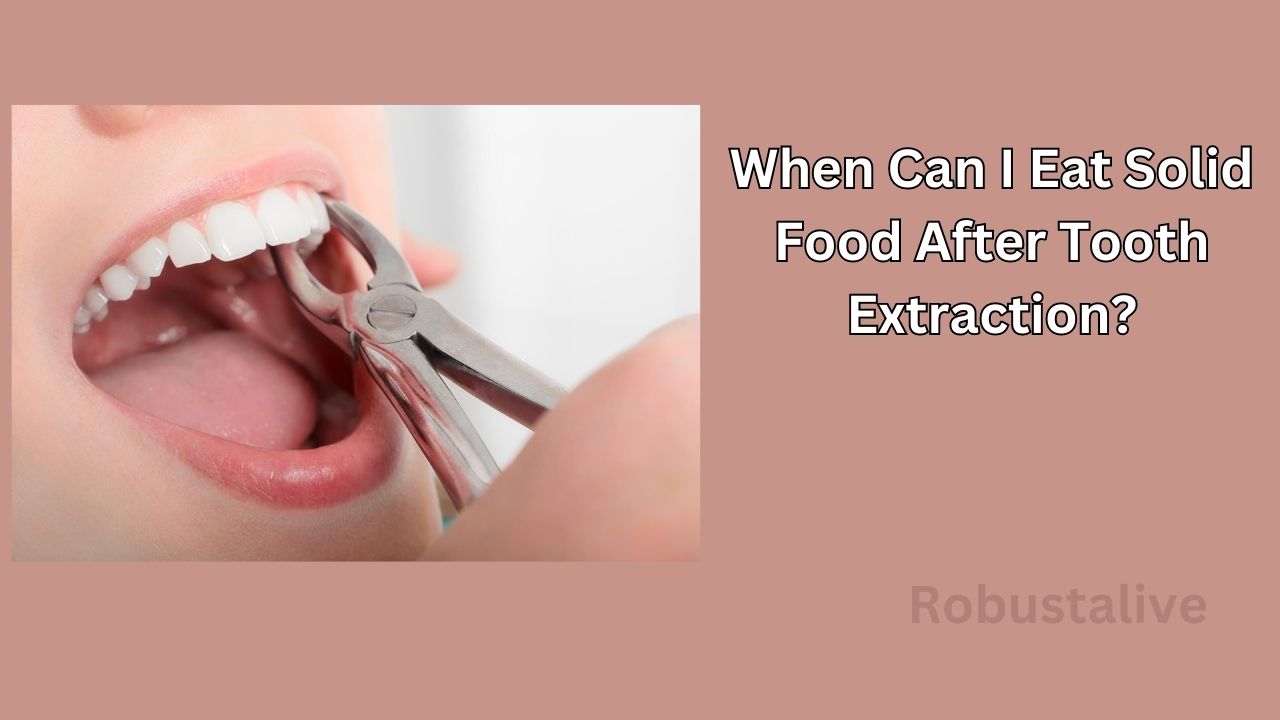
Following a tooth extraction, navigating the transition to solid food intake takes patience and commitment to a properly thought-out sequence. In order to facilitate healing and meet nutritional requirements, a precise balance must be struck.
When can I eat solid food after tooth extraction?
Well, it’s a frequently asked question and the answer relies on a number of variables. It depends on the difficulty of the extraction, the natural healing process of your body, and the advice given by your oral surgeon. You can start eating solid food within 7-10 days unless your condition develops any complications.
Here I will discuss the food timeline after tooth extraction. You will also know more about required lifestyle changes after tooth extraction and which food you need to avoid. So, keep reading to gather more information regarding your post-tooth extraction journey.
When Can I Eat Solid Food After Tooth Extraction
If you had a tooth extraction procedure, then I’m sure you must be going through a lot of pain. On top of that, having cravings for all the delicious foods in the world can add more to your pain.
Let me break this news to you that you actually can’t eat solids right after your tooth extraction. Now you must be wondering how long I need to starve. Well, you don’t have to starve. You can have liquid-type food items for the first 24 hours. Another thing, you will have to erase spicey & hot food from your diet chart for the next few days.
After the extraction, you can gradually start eating soft, simple-to-chew meals. You will be following this eating routine for 2-7 days after your tooth extraction.
You can eat things like yoghurt, mashed potatoes, scrambled eggs, and spaghetti that are properly cooked. And don’t forget to include some tasty soft fruits in your post-tooth extraction food platter. Stay away from items that are hard, sticky, or crunchy since they may potentially irritate the healing socket. You can replace hard types of meals with shakes.
After 7 days, you can start trying firmer and solid meals. For some, it takes 7 days, and for others, it can take 10 days as well. Listen to your body as it heals, and discuss with your dentist to get clearance on restarting solid meals.
Nevertheless, keep your tounge away from the extraction site. And choose foods that won’t put too much pressure on the healing region. Chew on the side of the mouth that is distal to the extraction site to prevent exerting pressure there.
An important tip to follow during the first healing phase is to stay hydrated. Drink lots of water, but refrain from using straws. The suction can break the clot that is developing in the extraction site.
Tooth Removal Food Timeline
Here’s a guideline for you that will make it easier for you to plan ahead what you will eat in your post-tooth extraction phase:
| Days After Extraction | Diet Type | Food List |
| Day 1 | A watery or soft diet | Apple sauce, yoghurt, pudding, smoothies, and broth |
| Day 2-6 | Soft meals | Oatmeal, well-cooked noodles, scrambled eggs, and mashed potatoes |
| Day 4-6 | Easily chewable food | Rice, soups, and soft fruits (bananas, boiled apples) |
| Day 7-10 | Slow transition to solid food | Lean meats, soft bread, spaghetti, and cooked veggies |
| Post Healing | Restart regular diet | Whatever you prefer eating |
Why After Oral Surgery You Can’t Eat Solid Food
You offer your body the greatest chance to heal effectively by eliminating foods that impede the healing process.
Following tooth removal, a blood clot forms in the empty socket. This clot’s purpose is to help the healing process because it shields the underlying bone and nerve endings. If you eat certain food that will dislodge the blood clot, then it will increase the chances of getting to a condition known as “dry socket”. Dry sockets can hurt and slow the healing process.
Tooth removal makes that particular area of extraction swollen and sore. Biting on crunchy, tough, or gooey food will aggravate the pain. It will also delay your overall healing process.
After extraction, that wound becomes vulnerable to infection. You need to avoid foods that hold the possibility of spreading bacteria.
List of Food You Need to Avoid After Tooth Extraction
Mindfulness regarding your food choice will save you from worsening your condition. So, here’s a list of food that is not tooth extraction diet friendly and better to avoid during the healing process.
| Food Type | Name of Food Items |
| Crunchy & Hard | Hard candies, nuts, chips, popcorn, raw carrots, and celery |
| Chewy & Sticky | Taffy, caramels, gummy sweets, chewing gum |
| Acidic & Spicey | Foods containing vinegar, hot peppers, citrus fruits and juices |
| Carbonated & Alcoholic | Soda & Alchohol |
| Beverages & Hot Food | Hot soup, noodle dishes, hot tea or coffee |
| Smoking | Using tobacco goods and smoking |
| Hard to Chew | Chewy bread and tough meats |
| Seeds | Sesame or poppy seeds are tiny seeds. |
| Sugary Foods | Chocolates & candy |
| Drinks | Any drink that requires you to use a straw |
When It Is Safe to Eat Solid Food If You Got Stitches After Tooth Extraction
Before introducing solid food, you need to consider a few things. These things are the type of extraction, the position of the removed tooth and how many sutures were used.
After surgery, the blood clot grows to protect the underlying bone and nerve endings. The stitches bind the incision together. Eating solid foods at this time cause issues like dry socket. Eating hard foods also disturbs the sutures and dislodges the blood clot.
In the initial days, you should also stay away from grains. Foods like rice can enter and get stuck in the wound. Drinking too hot drinks will burn the surgical region or the numb parts.
Lifestyle Changes You Need to Adapt After Wisdom Teeth Removal
One has to be careful about their lifestyle after going through any kind of surgical procedure. Wisdom tooh removal surgery requires you to be aware of a few habits and activities that can be detrimental to your post-surgery recovery.
You can follow these must-do lifestyle changes to lessen your pain and activate a speedy recovery process.
| Lifestyle Changes You Need | Details |
| Proper Rest | By taking it easy and avoiding intense activities, you will help your body recuperate. |
| Dietary Changes | Eat soft meals, drink plenty of liquids, and stay away from crunchy or hard foods. |
| Drink Fluid | Drink liquids, especially water, to stay hydrated. |
| Oral Cleanliness | Use a soft-bristled toothbrush, gently rinse with warm seawater, and stay away from straws. |
| Dealing with Pain | Use cold compresses and prescription painkillers to ease discomfort. |
| Bruising and Swelling | Use cold compresses at first, then move to warm ones while keeping your head elevated. |
| Avoid Alcohol And Tobacco | Avoid smoking and alcohol because they will slow the healing process. |
| Stop Sucking Motions | Avoid actions like smoking or using straws that require forceful sucking. |
| Follow The Post Operative Guidelines | Follow particular instructions for eating, drinking, and taking medicines. |
| Avoid Vigorous Workouts | To avoid bleeding, refrain from physically demanding tasks. |
| Set Up Follow Up Meetings | Attend follow-up appointments to track recovery and discuss any issues. |
| Observe Healing | Keep an eye out for infection symptoms and get in touch with a medical expert. |
When to Seek Medical Assistance After Teeth Extraction
If you face these instances following a tooth extraction then you must call or directly visit your dentist.
- Get medical attention if bleeding doesn’t stop or becomes much worse after the first day.
- If pain killers don’t help with intense pain.
- If swelling persists with excruciating discomfort after the initial few days.
- If you get a fever and the temperature is 100.4°F.
- If your nausea or vomiting prevents you from eating food or drinks.
- If you’re having trouble breathing
- If there is pus or foul-smelling discharge at the extraction site.
- If the blood clot develops at the site of the extraction
- If the surgical site shows signs of redness, warmth, or spreading redness.
Frequently Asked Questions (FAQs)
When Can You Eat Bread & Chicken After Tooth Extraction?
This question indicates how much of a chicken and bread lover you are. As I have already discussed the timeline of eating solids above, you really can’t eat these food items until the 7th day.
How Long Will It Hurt to Eat After Tooth Extraction?
Usually, the first several days in the immediate aftermath are the most uncomfortable. Eating solid foods may be difficult at this time due to discomfort and swelling. You’ll probably feel less discomfort when eating as the healing process develops, often by the end of the first week. Many patients discover that their pain has greatly decreased by the end of the second week.
Can I Eat Ice Cream After Tooth Extraction?
Yes, after a tooth extraction, you can have ice cream. Ice cream is a cooling, calming, and mild choice that can be soothing after tooth extraction. However, pick tastes that aren’t too harsh or don’t have any crunchy additives that can interfere with the mending socket.
Take Away
When can i eat solid food after tooth extraction? To sum up, the process of gradually reintroducing solid meals following tooth extraction differs based on your body’s recovery. A soft or watery diet is necessary in the days immediately after the extraction to reduce pain and speedy healing. You will be able to add tougher meals by the end of the first week.
Many people discover that they may safely continue a more diverse diet as the second week goes on. Most people have little to no pain while eating solid foods by the third and fourth weeks. However, to guarantee a successful and painless recovery, always put your comfort first and adhere to your doctor’s instructions.

